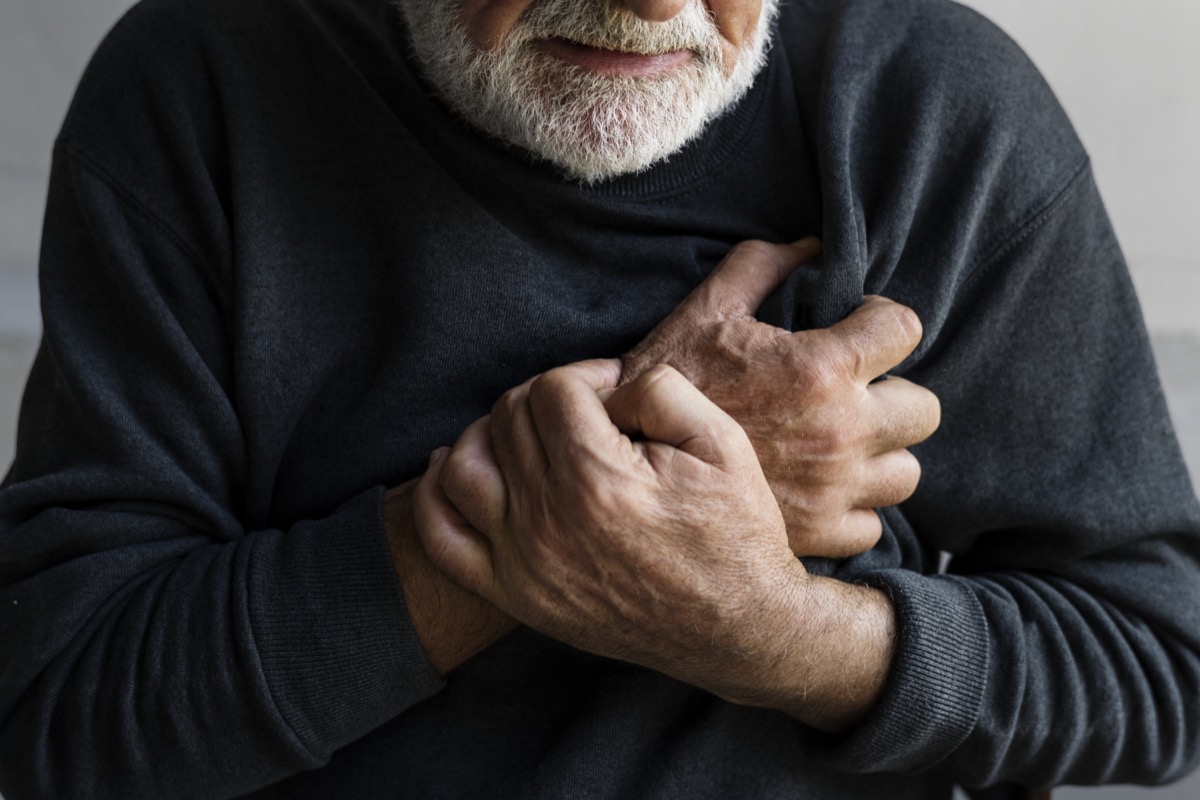Men Over 50 Should Watch Out for These 4 Heart Conditions
Cardiac issues are no longer considered primarily a “men’s problem.” Thanks to plenty of research, we now know that cardiovascular health problems are a leading cause of death and disability among women, as well. Yet experts say that in terms of sheer numbers of incidence, many heart issues disproportionately strike men. These cardiovascular events also tend to occur an average of seven to 10 years earlier in men than in women.
Women, on the other hand, tend to fare worse compared to men when a heart health issue does arise, due to under-treatment and misdiagnosis. “Both in primary and secondary prevention, there is evidence that women are under-treated, compared to men,” explains a 2019 study in the International Journal of Environmental Research and Public Health. “Women often experience heart disease in a different way compared to men, and lack of recognition of this has been shown to have adverse consequences,” they add.
Ultimately, there’s reason for both men and women to be concerned about their heart health—but since these diseases are much more prevalent in men, those over 50 should be sure to get checked for them. Read on to learn what conditions men in that age group need to watch out for.
READ THIS NEXT: If This Happens to You in the Bathroom, Get Checked for Heart Failure.

Anyone can have a heart attack, and everyone should know the signs. Yet a 2016 study published in the journal JAMA Internal Medicine revealed that heart attacks are twice as likely to occur in men than women, even after controlling for established risk factors such as high cholesterol, tobacco use, hypertension, high BMI, diabetes, and sedentary lifestyle.
“The gender gap persists throughout life, but whereas relative risk estimates diminish with age, absolute differences in risk increase,” the study authors wrote. “Overall, men have roughly twice the risk of myocardial infarction (MI) compared with women, a contrast that cannot be explained by differences in the levels of other coronary heart disease (CHD) risk factors.” Out of nearly 34,000 individuals in Norway, the researchers found that a total of 2,793 participants went on to have a heart attack between 1979 and 2012. Among those subjects, “the gender gap persisted throughout life but declined with age due to a flattening of the incidence curve in men. In women, risk increased steadily with age.”
However, the American Heart Association notes that after suffering a heart attack, women are 20 percent more likely than men to develop heart failure or die within five years. This may in part be due to the fact that women tend to be an average of 10 years older when they suffer heart attacks.
READ THIS NEXT: Doing This at Night Hurts Your Heart, Experts Warn.

Abdominal aortic aneurysms (AAA) occur when the aorta—the pathway through which the heart pumps blood to the rest of the body—bulges or ruptures. The condition disproportionately affects men, especially white men, the Cleveland Clinic says. The health authority notes that they are the tenth leading cause of death in men over the age of 55.
However, studies show that compared with men, women with AAA are four times more likely to experience aortic rupture, and three times more likely to die from it.

Heart failure occurs when the muscles of the heart weaken and the heart can no longer pump blood as well as it should. This can force fluid to back up into the lungs and legs, causing shortness of breath and swelling in the lower limbs.
A 2006 study in the BMJ journal Heart looked at data from the Framingham heart study—a comprehensive, decades-long study on heart health—and found that “the incidence of heart failure was significantly higher in men than women at all ages.” The BMJ study, which took place in Britain, found that “on the basis of this study it is estimated that there are approximately 34,000 incident cases of heart failure per year in men and 29,000 cases per year in women in the U.K.”
However, studies show that women represent half of all hospital visits for heart failure, despite their overall numbers being lower.
For more health news sent directly to your inbox, sign up for our daily newsletter.

A 2009 study from the American Heart Association reviewed 98 articles on the gender gap in stroke risk and found that men experience strokes sooner and far more often than women do. They learned that the mean age at first-ever stroke was 68.6 years among men, and 72.9 years among women. They also found that the incidence of stroke was 33 percent higher in men than in women.
That said, the data showed that stroke tended to be more severe in women, leading to more fatalities in that population.
READ THIS NEXT: 3 Ways Your Stomach Is Telling You That Your Heart’s in Trouble.
" Conservative News Daily does not always share or support the views and opinions expressed here; they are just those of the writer."

Now loading...